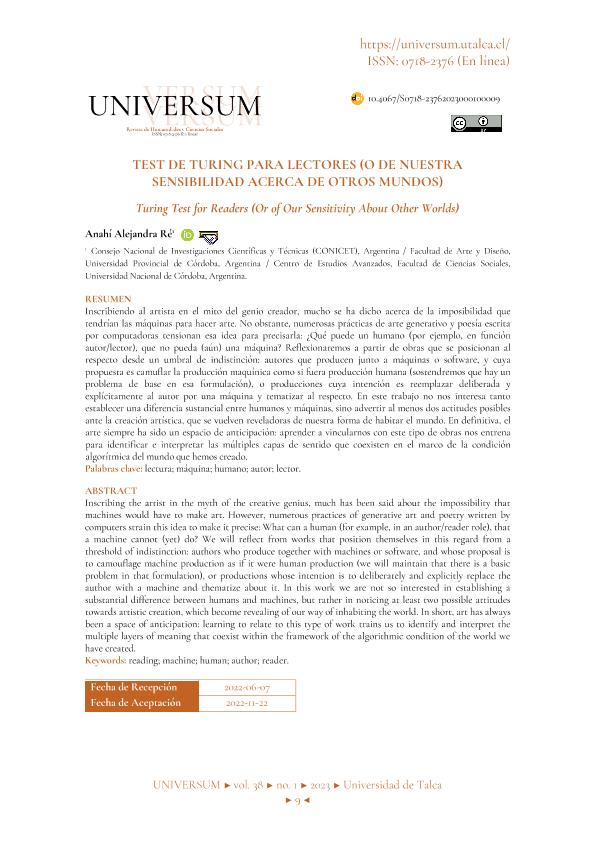Artículo
Inscribiendo al artista en el mito del genio creador, mucho se ha dicho acerca de la imposibilidad que tendrían las máquinas para hacer arte. No obstante, numerosas prácticas de arte generativo y poesía escrita por computadoras tensionan esa idea para precisarla: ¿Qué puede un humano (por ejemplo, en función autor/lector), que no pueda (aún) una máquina? Reflexionaremos a partir de obras que se posicionan al respecto desde un umbral de indistinción: autores que producen junto a máquinas o software, y cuya propuesta es camuflar la producción maquínica como si fuera producción humana (sostendremos que hay un problema de base en esa formulación), o producciones cuya intención es reemplazar deliberada y explícitamente al autor por una máquina y tematizar al respecto. En este trabajo no nos interesa tanto establecer una diferencia sustancial entre humanos y máquinas, sino advertir al menos dos actitudes posibles ante la creación artística, que se vuelven reveladoras de nuestra forma de habitar el mundo. En definitiva, el arte siempre ha sido un espacio de anticipación: aprender a vincularnos con este tipo de obras nos entrena para identificar e interpretar las múltiples capas de sentido que coexisten en el marco de la condición algorítmica del mundo que hemos creado. Inscribing the artist in the myth of the creative genius, much has been said about the impossibility that machines would have to make art. However, numerous practices of generative art and poetry written by computers strain this idea to make it precise: What can a human (for example, in an author/reader role), that a machine cannot (yet) do? We will reflect from works that position themselves in this regard from a threshold of indistinction: authors who produce together with machines or software, and whose proposal is to camouflage machine production as if it were human production (we will maintain that there is a basic problem in that formulation), or productions whose intention is to deliberately and explicitly replace the author with a machine and thematize about it. In this work we are not so interested in establishing a substantial difference between humans and machines, but rather in noticing at least two possible attitudes towards artistic creation, which become revealing of our way of inhabiting the world. In short, art has always been a space of anticipation: learning to relate to this type of work trains us to identify and interpret the multiple layers of meaning that coexist within the framework of the algorithmic condition of the world we have created.
Test de turing para lectores (o de nuestra sensibilidad acerca de otros mundos)
Título:
Turing Test for Readers (Or of Our Sensitivity About Other Worlds)
Fecha de publicación:
03/2023
Editorial:
Universidad de Talca
Revista:
Universum
ISSN:
0716-498X
e-ISSN:
0718-2376
Idioma:
Español
Tipo de recurso:
Artículo publicado
Clasificación temática:
Resumen
Archivos asociados
Licencia
Identificadores
Colecciones
Articulos(CCT - CORDOBA)
Articulos de CTRO.CIENTIFICO TECNOL.CONICET - CORDOBA
Articulos de CTRO.CIENTIFICO TECNOL.CONICET - CORDOBA
Citación
Ré, Anahi Alejandra; Test de turing para lectores (o de nuestra sensibilidad acerca de otros mundos); Universidad de Talca; Universum; 38; 1; 3-2023; 9-28
Compartir
Altmétricas




